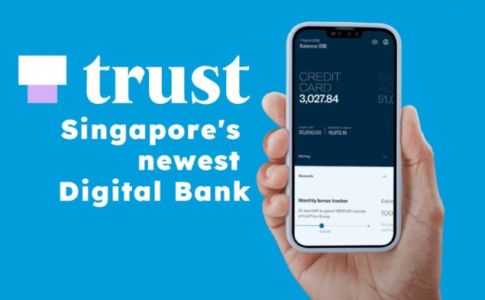The competition in Singapore’s digital banking space intensifies, but new players need to do more to stand out and ensure long-term success.
SINGAPORE: As digital banking continues to evolve in Singapore, new players in the market are beginning to face increasing challenges in attracting and retaining customers. This comes as the competition heats up, with established players ramping up their digital offerings and new digital banks vying for a slice of the market.
One of the latest entrants, Trust Bank — a collaboration between Standard Chartered and FairPrice Group — has already seen some traction. Irene Ho, a 41-year-old customer, signed up for a credit card with Trust last year specifically for the grocery rebates it offered through NTUC FairPrice. While she already had multiple credit cards, the appeal of earning rebates for essential purchases, especially amid rising living costs, was enough to convince her to apply.
Unlike traditional banks, Trust Bank operates entirely online without physical branches, with services available solely through its mobile app. It’s one of five digital or online-only banks that launched in Singapore over the past year, including GXS Bank (backed by Grab and Singtel) and MariBank (owned by Sea). These banks were granted licenses by the Monetary Authority of Singapore (MAS) in 2020 to foster competition in the financial sector.
While the premise of digital banks is promising — zero physical footprint leading to lower operational costs and better customer offerings — these new players face challenges in Singapore’s small market. Less than 2% of the adult population lacks a bank account, making it difficult to grow their customer base.
The new banks have launched savings accounts offering higher interest rates and positioned themselves as more “transparent” and “fuss-free” compared to traditional banks, which often require minimum balances or spending to unlock bonus rates. However, even as digital banks promote these perks, analysts point out that the incumbents, such as DBS, OCBC, and UOB, have improved their digital offerings and continue to dominate the retail banking sector.
Differentiation is Key
GXS Bank, Trust, and MariBank all offer savings accounts with appealing rates, but the challenge is to stand out in a market where the offerings of established banks are becoming increasingly competitive. Trust Bank, for example, offers up to 2.5% annual interest for NTUC union members and has managed to attract over S$1 billion in deposits. However, analysts warn that the excitement generated by initial promotions will eventually wear off unless digital banks continue to innovate.
The digital banks’ success hinges not only on attractive interest rates but also on offering products that address the needs of their target customers. GXS has rolled out personal loans aimed at gig economy and freelance workers, while Trust is expanding its product range with insurance and credit cards. MariBank, meanwhile, is taking a more measured approach, focusing on business loans for Shopee sellers.
Despite these offerings, industry experts suggest that digital banks must improve their user experience, provide better customer support, and work on retaining users long-term. Ms. Ho, for instance, uses her Trust Bank credit card primarily for grocery shopping but doesn’t use it for other expenses. Digital banks need to convert customers into active users of their platforms — not just secondary accounts that are rarely used.
The Road to Profitability
The road to profitability for these digital banks is long. While Trust has a full bank license and is rolling out new products rapidly, other players like GXS and MariBank are still limited by deposit caps imposed by MAS. GXS, in particular, has a waiting list for customers, which it plans to address once it can lift the restrictions.
Despite the high interest rates offered by the digital banks, traditional banks have started to up their offerings in response. However, the digital banks’ reliance on attractive introductory rates is not a long-term solution, according to experts. Zennon Kapron, founder of Kapronasia, points out that while incentives may draw customers in, maintaining them will require consistent innovation and sustainable business models.
Customer Education and Transparency
A major challenge for digital banks is the need for better customer education. While rates and promotional offerings are compelling, many customers still prefer the human element of banking that comes with traditional institutions. In addition, while digital banks have to balance their offers with profitability, they must also educate customers on the long-term costs of their products. As the novelty of digital banks fades, their success will depend on how well they meet customer needs while maintaining sustainable operations.
Digital banks like Trust are already planning for the future by expanding their product offerings, with loans, GIRO payment services, and more savings options on the horizon. However, whether these new entrants can sustain their growth and move beyond customer acquisition to long-term profitability remains to be seen.
As the digital banking race continues, new players will need to prove that they can offer more than just enticing promotional rates and low-cost structures. With incumbent banks stepping up their digital services and offering competitive products, digital banks must innovate, enhance their user experience, and provide ongoing value to their customers. The next few years will determine which players emerge victorious in the crowded Singapore market.








